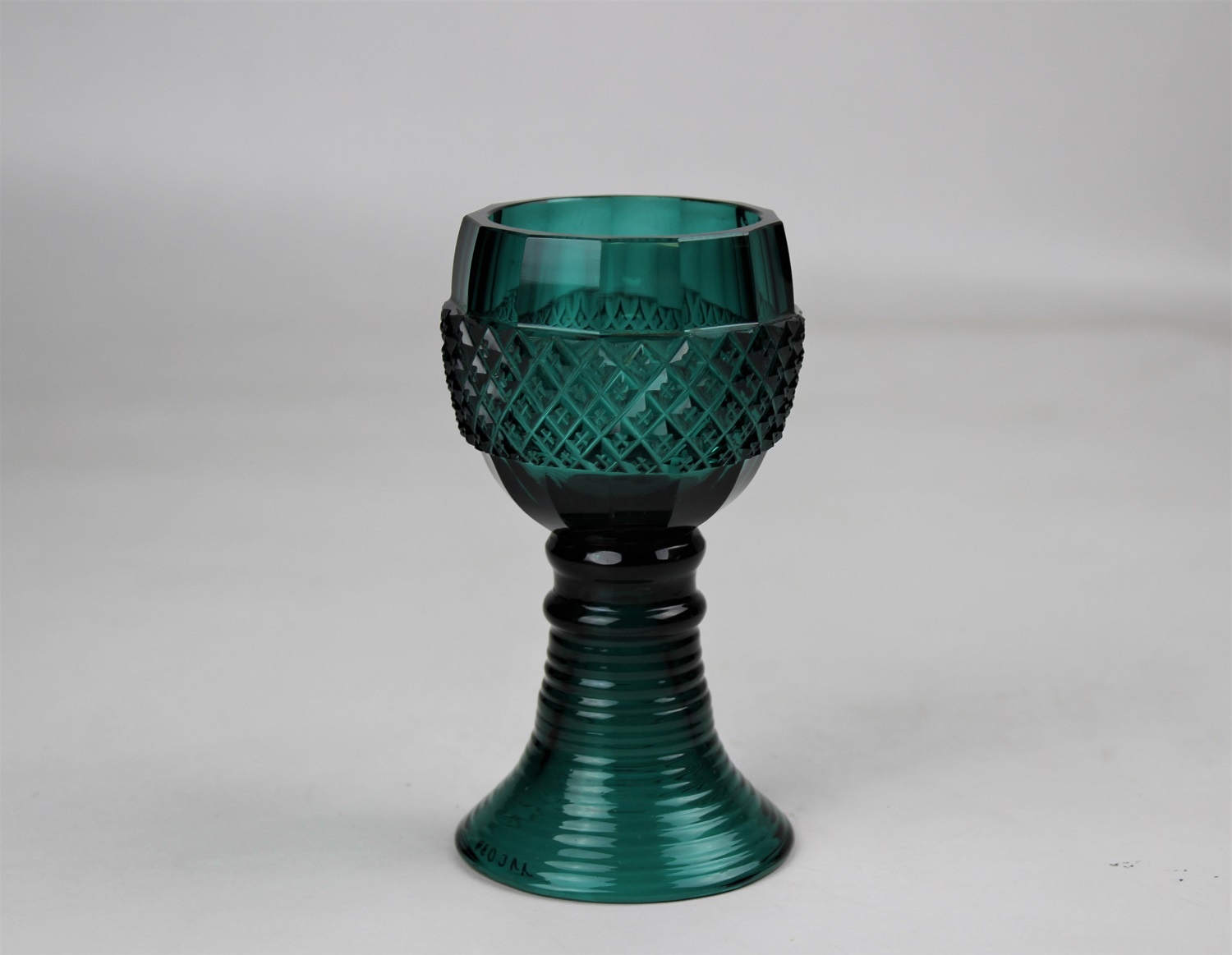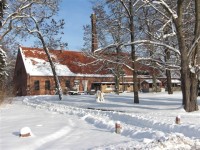Römer, deutsch, Mitte des 19. Jh
Fuß und Schaft in Model geblasen
Kuppa facettiert mit Band aus doppeltem (?)-Schliff
Text in der Sonderausstellung "Glas und europäisches Kulturerbe":
Chemisierung der Glasindustrie
Die Verwissenschaftlichung der Glasindustrie lässt sich besonders gut an der Zunahme der Anzahl von Glasfarben nachvollziehen. 1797 wurde das Metall Chrom entdeckt, dessen Oxid heute die größte Bedeutung bei der Herstellung grüner Glasmassen hat. Bis 1800 war eine schmutzig grüne Färbung ein Qualitätsmangel aufgrund mit Eisenoxid verunreinigten Sandes und Pottasche, in der Industrialisierung war das „Antikgrün“ Ergebnis einer definierten Schmelze.
Uranglas ist ein durch Uranverbindungen im Gemenge grüngelb und gelb gefärbtes Glas, dessen Herstellung um 1830 durch Franz X. A. Riedel in Böhmen eingeführt wurde. Wieder zeigte sich die böhmische Glasindustrie als besonders innovativ.
Sonderausstellung: "Glas und europäisches Kulturerbe", 8.7.2018 ff., Abschnitt: Uran
en

